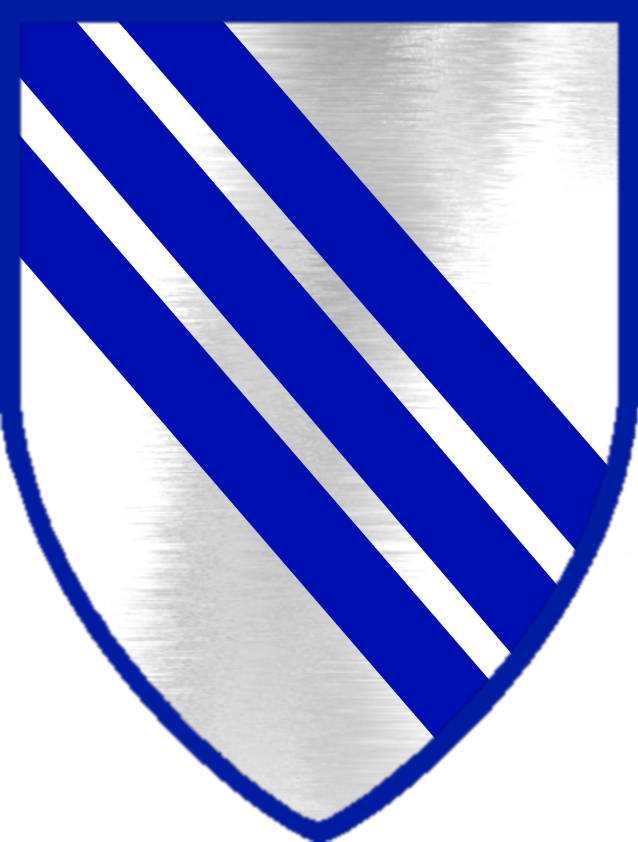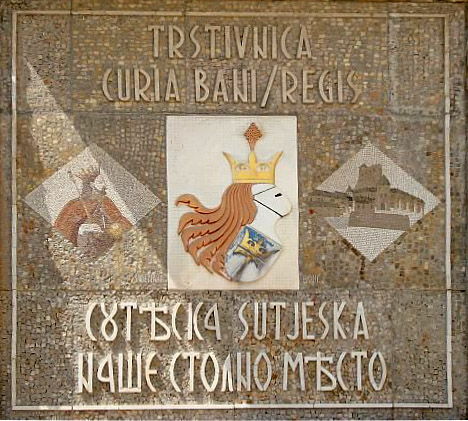|
Petar I Pavlović
Petar I Pavlović ( sr-cyr, Петар I Павловић; died 1420) was a knez, and then a Grand Duke of Bosnia, from the noble family of Pavlović, which had its possessions in the eastern parts of the Kingdom of Bosnia. After the murder of his father Pavle Radinović (died 1415) on '' Parena Poljana'' near royal court in Sutjeska and below a Bobovac in 1415, after the stanak at which whole Pavlović family was present at, Petar took over the leadership of the Pavlovići and with his younger brother Knez Radosav (1420–1441) started a war against Sandalj Hranić (1392–1435) and Kosača klan. In that conflict, he relied on the help of the Ottomans, whose help he paid for by recognizing vassal relations to the sultan, which also resulted in successful campaigns against Sandalj, who was completely suppressed. However, the Ottomans changed sides and arrived in the Kingdom of Bosnia in 1420 as Sandalj's allies against Pavlović. In the conflict with them, Petar himself was kil ... [...More Info...] [...Related Items...] OR: [Wikipedia] [Google] [Baidu] |
Gospodin
Hospodar or gospodar is a term of Slavonic origin, meaning "lord" or "master". Etymology and Slavic usage In the Slavonic language, ''hospodar'' is usually applied to the master/owner of a house or other properties and also the head of a family. The hospodar's house is called '' hospóda''. There is also an alternative form for the head of the household - ''gazda'', which is also common in Hungary. ''Hospod'' is used exclusively when referring to the Lord and has only a slight relation to hospodar. The pronunciation ''hospodar'' of a word written as ''господар'' in many Slavonic languages, which retains the Cyrillic script, could be due to the influence of either Ukrainian, where the first letter is pronounced as � or that of the Church Slavonic, where it is pronounced as � The title was used briefly towards the end of the Second Bulgarian Empire. In 1394-95, Ivan Shishman of Bulgaria referred to himself not as a Tsar (as traditionally), but as a ''gospodin'' of Tarn ... [...More Info...] [...Related Items...] OR: [Wikipedia] [Google] [Baidu] |
Sandalj Hranić
Sandalj Hranić Kosača ( cyrl, Сандаљ Хранић Косача; 1370 – 15 March 1435) was the most powerful Bosnian nobleman whose primary possessions consisted of land areas between Adriatic coast, the Neretva and the Drina rivers in Bosnia, and served the court as the ''Grand Duke of Bosnia'' sometime between 1392 and his death in 1435, although the first mention as a Grand Duke in sources comes from 16 June 1404. He was married three times, but had no children. After his death, he was succeeded by his nephew Stjepan Vukčić Kosača. Rise of Sandalj As the head of the House of Kosača, Sandalj Hranić succeeded his uncle Vlatko Vuković in 1392. In 1403, Radič Sanković led the attacks on Dubrovnik during the Bosnian-Ragusan War in the name of King Stephen Ostoja. Sandalj Hranić captured and blinded Radič, and held him in prison until his death in 1404. When King Ladislaus of Naples sold his rights to the kingdom of Dalmatia to the Republic of Venice ... [...More Info...] [...Related Items...] OR: [Wikipedia] [Google] [Baidu] |
Vlatko Tumurlić
Vlatko Tumurlić ( sr-Cyrl, Влатко Тумурлић) was a ''krstjanin'', a member of the Bosnian Church, a diplomat in the service of the Pavlović family. Life and career Vlatko Tumurlić, a ''krstjanin'', is better known as a diplomat, deputy in the service of the Pavlović family, than for his place and role in the hierarchy of the Bosnian Church. Together with other deputies, he represented Knyaz Pavle Radinović in negotiations with the people of Ragusa (today Dubrovnik) during the Bosnian–Ragusan war of 1403–1404, and he also represented Duke Radoslav Pavlović in resolving the fate of the town of Sokol in Konavle in 1423. These affairs show that members of the Bosnian Church were appropriate and sufficient guarantors for the people of Dubrovnik in the most important issues they had with the Bosnian nobles Pavlovićs. Hence, it is assumed that during the 15th century the Bosnian Church was respected as a stable framework for solving important state issues fo ... [...More Info...] [...Related Items...] OR: [Wikipedia] [Google] [Baidu] |
Republic Of Dubrovnik
hr, Sloboda se ne prodaje za sve zlato svijeta it, La libertà non si vende nemmeno per tutto l'oro del mondo"Liberty is not sold for all the gold in the world" , population_estimate = 90 000 in the XVI Century , currency = Ragusa perpera and others , common_languages = , title_leader = Rector as Head of state , leader1 = Nikša Sorgo , year_leader1 = 1358 , leader2 = Sabo Giorgi , year_leader2 = 1807-1808 , today = CroatiaBosnia and HerzegovinaMontenegro , footnotes = A Romance language similar to both Italian and Romanian. While present in the region even before the establishment of the Republic, Croatian, also referred to as ''Slavic'' or ''Illyrian'' at the time, had not become widely spoken until late 15th century. The Republic of Ragusa ( dlm, Republica de Ragusa; la, Respublica Ragusina; it, Repubblica di Ragusa; hr, Dubrovačka Republika; ... [...More Info...] [...Related Items...] OR: [Wikipedia] [Google] [Baidu] |
Olovo
Olovo ( sr-cyrl, Олово) is a town and municipality located in the Zenica-Doboj Canton of the Federation of Bosnia and Herzegovina, an entity of Bosnia and Herzegovina. It is situated about 50 kilometers northeast of the capital city of Sarajevo. History The town Olovo was first mentioned in the year 1382 under the name "Plumbum" (Latin for lead). The word ''olovo'' in Bosnian means ''lead'', and the name was given to the town for its well-known lead ore deposits. Olovo stands on the Sarajevo–Tuzla highway M18, and is located 50 km northeast of Bosnia and Herzegovina's capital city of Sarajevo. Olovo is located in the Zenica-Doboj Canton. Recently, there have been attempts to make Olovo part of the Sarajevo Canton; however, the town remains within the Zenica-Doboj Canto Since the Middle Ages, the town has been well known for its lead ore deposits, and Olovo was a mining town during medieval Bosnian state period, when the town and the region were part of the Pavlović's ... [...More Info...] [...Related Items...] OR: [Wikipedia] [Google] [Baidu] |
Ostoja Of Bosnia
Stephen OstojaHis name in Bosnian is rendered Stjepan Ostoja (), while in Croatian it's Stjepan Ostoja. In Serbian, he is called Stefan Ostoja (). ( sh-Latn-Cyrl, separator=" / ", Stjepan Ostoja, Стјепан Остоја; died September 1418) was King of Bosnia from 1398 to 1404 and from 1409 to 1418. Family connections He was a member of the House of Kotromanić, most likely son of Vladislaus and brother of King Stephen Tvrtko I. When duke Hrvoje Vukčić in 1416 died, King Ostoja divorced his old wife Kujava from the house of Radenović and married Hrvoje's widow Jelena Nelipčić the next year.John Van Antwerp Fine, Bosnian Institute; ''The Bosnian Church: Its Place in State and Society from the Thirteenth to the Fifteenth Century'', Saqi in association with The Bosnian Institute, 2007 Jelena Nelipčić was the sister of Prince Ivan III Nelipac from the Croatian noble Nelipić (Nelipac) family. That way Ostoja inherited most of Hrvoje's lands. Rise to power Ostoja was b ... [...More Info...] [...Related Items...] OR: [Wikipedia] [Google] [Baidu] |
Brailo Tezalović
)'' , image = , caption = , alt = , succession = carinik (toll officer) , CoA = , more = no , reign = , reign-type = , predecessor = , successor = , spouse = , spouse-type = Spouse , issue = , full name = , native_name = , styles = , other_titles = , house-type = , noble family = , father = Mihoje , mother = Vladija , birth_date = ? , birth_place = Prača , death_date = 1433 , death_place = , burial_date = , burial_place = , occupation = in service of Pavlovićs as ''carinik'' (toll officer) , signature = , image_size=180 Brailo Tezalović ( sr-cyr, Браило Тезаловић, la, Braylus Thessalovich; 1392–1433) was a Bosnian '' knez'' and merchant, nobleman and diplomat, who served ... [...More Info...] [...Related Items...] OR: [Wikipedia] [Google] [Baidu] |
Protovestiarios
''Protovestiarios'' ( el, πρωτοβεστιάριος, "first ''vestiarios''") was a high Byzantine Empire, Byzantine Byzantine aristocracy and bureaucracy, court position, originally reserved for Eunuch (court official), eunuchs. In the late Byzantine period (12th–15th centuries), it denoted the Empire's senior-most financial official, and was also adopted by the medieval Serbian state as protovestiyar (прото-вестијар). History and functions The title is first attested in 412, as the ''comes sacrae vestis'', an official in charge of the Byzantine emperor's "sacred wardrobe" ( la, sacra vestis), coming under the ''praepositus sacri cubiculi''. In Greek language, Greek, the term used was ''oikeiakon vestiarion'' (, "private wardrobe"), and by this name it remained known from the 7th century onward. As such, the office was distinct from the public or imperial wardrobe, the ''basilikon vestiarion'', which was entrusted to a state official, the ''chartoularios tou ves ... [...More Info...] [...Related Items...] OR: [Wikipedia] [Google] [Baidu] |
Knez (title)
, or (Old Church Slavonic: Кнѧзь) is a historical Slavic title, used both as a royal and noble title in different times of history and different ancient Slavic lands. It is usually translated into English as prince or duke, depending on specific historical context and the potentially known Latin equivalents of the title for each bearer of the name. In Latin sources the title is usually translated as , but the word was originally derived from the common Germanic (king). The female form transliterated from Bulgarian and Russian is (), in Slovene and Serbo-Croatian (Serbian Cyrillic: ), ''kniahinia'' (княгіня) in Belarusian and ''kniazioŭna'' (князёўна) is the daughter of the prince, (княгиня) in Ukrainian. In Russian, the daughter of a knyaz is (). In Russian, the son of a knyaz is ( in its old form). The title is pronounced and written similarly in different European languages. In Serbo-Croatian and some West Slavic languages, the word ... [...More Info...] [...Related Items...] OR: [Wikipedia] [Google] [Baidu] |
Parena Poljana
Panena is a small town in Arghakhanchi District in the Lumbini Zone of southern Nepal. At the time of the 1991 Nepal census The 1991 Nepal census was a widespread national census conducted by the Nepal Central Bureau of Statistics. Working with Nepal's Village Development Committees at a district level, they recorded data from all the main towns and villages of each ... it had a population of 2,598 and had 475 houses in the town. References Populated places in Arghakhanchi District {{Arghakhanchi-geo-stub ... [...More Info...] [...Related Items...] OR: [Wikipedia] [Google] [Baidu] |
Royal Court In Sutjeska
, status = destroyed , image = Kraljeva Sutjeska̞ 1.jpg , image_size = , caption = Medieval royal court of Bosnian kings in Sutjeska , location_town = Kraljeva Sutjeska , location_country = Bosnia and Herzegovina , coordinates = , start_date = c. mid–14th century , architect = , owner = state, (proscribed by KONS) , cost = , map_type = Bosnia and Herzegovina , relief =1 , map_alt = Royal court Kraljeva Sutjeska , map_caption = Location in Bosnia and Herzegovina , map_dot_label = Royal court Sutjeska , map_dot_mark = , building_type = Royal residence / court * Royal residence (14th–15th c.) *Royal chapel , structural_system = Various low buildings surrounding courtyards, pavilions, gardens and royal chapel , client = Bosnian bans and kings , engineer = unknown (probably loca ... [...More Info...] [...Related Items...] OR: [Wikipedia] [Google] [Baidu] |


.jpg)
.png)

